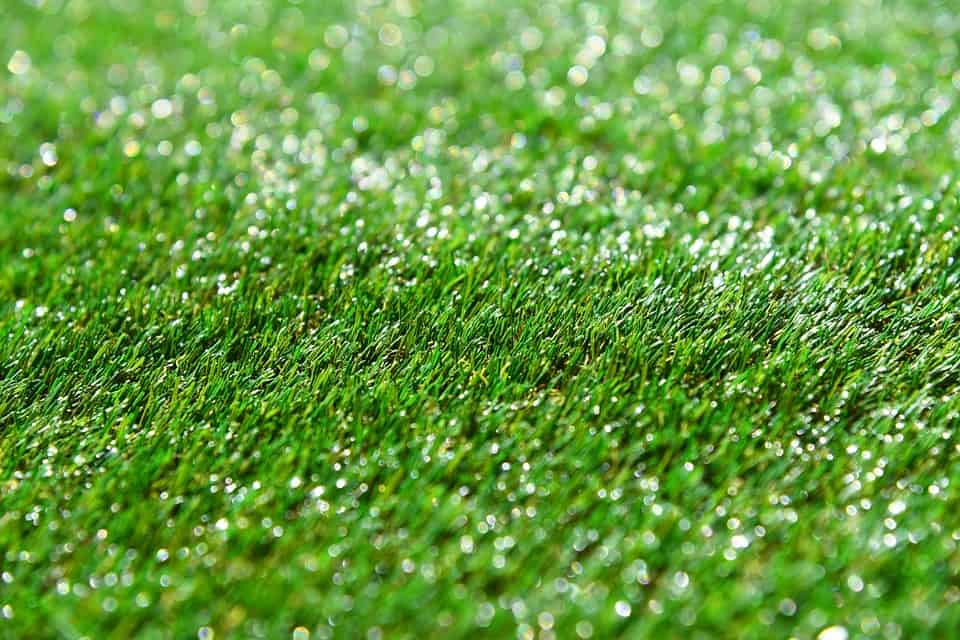Saving money, time and water are the main reasons why homeowners install synthetic grass. In the long run, this product gives you an attractive yard without mowing or watering the area. There are a few drawbacks to synthetic grass, but there are many ways that it can be installed in an improper fashion.

Take a look at the top 7 reasons why your synthetic grass has an installation problem. The solutions are typically simple to implement.
1. Forgoing the Plant Base Removal
Most properties that have a synthetic grass installation will already have a real lawn in place. You might figure that laying the grass on top of the turf is an option. For a proper installation, however, the old grass must be removed.
Popular Mechanics points out that any installation over the old grass will create a lumpy appearance. Real grass is seldom level. Your best option is transplanting the old grass. If you have a neighbor who can use the grass, carefully pull it from the ground like rolled sod. You’re left with bare soil.
When your old grass is just too damaged, pull and recycle the blades as mulch. You’re looking for bare soil as a solid starting point.
2. Skipping the Leveling Process
Removing the grass doesn’t always leave you with a flat yard. In fact, there are usually contours to the ground. Your synthetic grass won’t look authentic with lumpy sections to its appearance.
Prioritize the leveling in the yard. Cut and fill with soil or landscaping rocks as necessary. Use a leveling tool to verify your work. Perfection may be difficult to achieve, but you can come close to it.
To make your installation even more permanent, consider a compact roller’s services. These machines push the ground downward so that any air pockets are quickly snuffed out. The ground remains poised for a grass installation that looks natural and lasts for many years.
3. Forgetting the Landscape Fabric
You removed the old lawn, which revealed the bare soil. Thinking like a gardener is critical at this point. Although you’ve removed the main source of plants, there can still be seeds and roots just lurking below the surface. New growth is possible even if you lay out the artificial grass right now.
Always lay down landscape fabric before the synthetic grass. This fabric creates a barrier to new growth. Sunlight cannot penetrate through the fabric, and potential weeds can’t grow through the barrier.
Leaving this step out means that new growth can slowly encroach on the synthetic grass. A worst-case scenario involves removing the grass and tending to the weeds below. Make your synthetic grass installation a permanent feature by initially adding landscape fabric.
4. Failing to Match the Grain
When you lay traditional sod, the grass doesn’t have any specific orientation. It must merely fit into the installation area. Synthetic grass is different. Although it’s designed to be brushed out for a natural look, there is a grain. It’s defined by its manufacturing process.
Before you lay out any rolls, look at the grain. It looks like stripes down the entire length. Align the grain across the whole yard. No two grains should be perpendicular to each other. You want parallel lines.
The best way to choose the grain’s orientation on the ground is by length. Let the stripe go down the longest length of the yard. You’ll have fewer cuts to make as a result.
5. Overlapping the Edge
Take a tip from the Home Depot by aligning the grass sections as perfectly as possible. Synthetic grass isn’t designed to be overlapped. If you could look at the installation from above, an overlapped installation has literal stripes across its length.
The overlapped areas are simply darker than the single layer. A proper installation involves measurements and cuts into the grass rolls so that they touch from edge to edge. Professional installers use precision tools to complete this process. Once the edges are all aligned, the installers brush the grass out. Any lines that might be present before the brushing are now blurred away.
Don’t create gaps between the grass sections either. Another type of stripe occurs within the gaps, which might reveal the landscape fabric below.
6. Leaving the Spikes Loose
Spikes are the main fasteners that keep your grass in the place. Without proper installation, your grass won’t have a tight connection to the ground. As the installers add spikes to the grass, be sure that they’re hammered all the way in. You shouldn’t see the tips of the spikes after the installation. They should be flush with the ground. The synthetic grass covers them with their long lengths.
Aside from creating a loose installation, improperly installed spikes are hazards. Someone might trip or step on them. Reputable installers will add the spikes and check on their positions afterward. Unless the ground isn’t suitably prepared before the installation, the spikes should remain tightly connected to the ground for years to come.
7. Locating the Synthetic Grass in the Wrong Place
Home Advisor points out that synthetic grass needs ample drainage. Placing the grass in a low-lying area of the yard will instantly create problems. Don’t locate the grass at the bottom of a hill in your backyard, for example. Water will only pool onto the grass. Mold and other issues might prevail.
Ask your installer to create a drainage pathway from these areas if they must be covered in synthetic grass. Moving the water away from the grass will help it retain its shape and color. The drainage strategy varies based on your property’s contours and installation type. Your installers might create edges to the grass so that pathways are possible away from the area. They should test the drainage before finalizing the project too.
Work with synthetic grass Brisbane to refine your installation process. The experts can prep, roll out and complete the install with a quality appearance afterward. Take advantage of the best artificial grass around. It truly looks real with the latest products.










